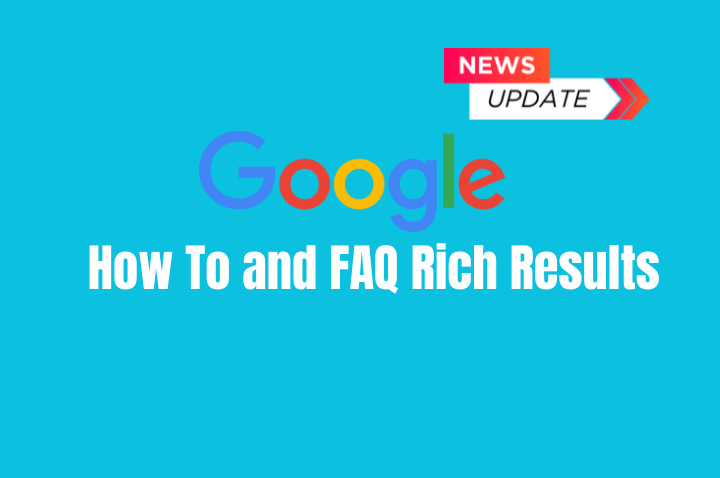Discover the latest transformative shifts in How To and FAQ-rich results. These updates revolutionize user search experiences, ensuring more comprehensive and visually enticing outcomes. Users now enjoy simplified access to step-by-step guides and solutions to frequently asked questions, seamlessly integrated into the search page. By optimizing content visibility and interaction, these changes foster a more engaging and efficient information discovery process. Stay tuned as we delve deeper into these enhancements and their far-reaching implications in our blog.
What are Google Rich Results?
Google Rich Results, often referred to as Rich Snippets, represent an advanced evolution of search results that transcends the conventional listing of page titles and descriptions. They present users with a more comprehensive understanding of a webpage’s content right within the search results page. This is achieved through structured data markup, which webmasters embed in their HTML code.
Structured data markup employs schema.org vocabulary, allowing search engines like Google to interpret and categorize information on web pages accurately. Rich Results can encompass diverse data types, such as images, reviews, ratings, prices, event details, and more, depending on the nature of the content.
For instance, when searching for a recipe, Rich Results might showcase the recipe’s name, an image of the dish, its rating, and preparation time. Similarly, a product page could display the product’s price, availability, and average rating, aiding users in making swift decisions.
The benefits of Rich Results are multifaceted. They augment user experience by offering insights into a web page’s substance, encouraging more informed clicks. The visual allure of Rich Results often leads to heightened click-through rates, benefiting websites with increased traffic. Moreover, they enhance a site’s visibility and credibility by standing out on the search page.
Various types of Rich Results are supported by Google, spanning domains like How To, FAQ, Recipe, Article, Event, and beyond. By implementing structured data markup, website administrators and SEO practitioners optimize their content for these rich enhancements, fostering higher visibility, engagement, and user satisfaction.
How Google reduce the visibility of FAQ-rich results in searches?
Google has implemented measures to reduce the visibility of FAQ-rich results in searches to improve the overall search experience. To prevent FAQ content from dominating the search results and provide users with more diverse and relevant information, Google has introduced algorithms that consider the balance of content types displayed.
These algorithms analyze the search query and the content available on the web to determine whether displaying FAQ-rich results would enhance the user’s understanding of the topic. If the algorithms detect an excessive number of FAQ-rich results for a particular query, they might limit the number of such results shown. This ensures that users receive a well-rounded set of results that include various content types like articles, videos, and forum discussions, thereby offering a more comprehensive view of the topic.
By reducing the prominence of FAQ-rich results when they are overly dominant, Google aims to maintain a balanced and informative search results page that caters to the diverse needs of users and encourages the exploration of different content formats.
Should You Remove FAQ & How to Structured Data?
Deciding whether to remove FAQ and HowTo structured data from your website requires careful consideration of your goals, content, and user experience. Here are some critical factors to consider:
- Content Relevance: If your content genuinely provides step-by-step instructions (HowTo) or answers common questions (FAQ), structured data can enhance its visibility in search results. Ensure that your content aligns with these formats before using the structured data.
- Search Visibility: Structured data can lead to enhanced search results with rich snippets, attracting more clicks. If search visibility and click-through rates are crucial for your site, keeping the structured data might be beneficial.
- User Intent: If users often seek quick answers or guides, structured data helps present this information upfront. It caters to users looking for concise and actionable information.
- Duplicate Content: If the structured data repeats the content visible on the page, it might be considered duplicate content. This can lead to fines from search engines.
- User Experience: Rich snippets can improve user experience by offering instant information. If your content benefits from these enhancements, retaining structured data is a good choice.
- Mobile and Voice Search: Structured data can improve mobile and voice search results, making your content more accessible to users across various devices.
- Algorithm Changes: Keep in mind that search engine algorithms evolve. Ensure that your structured data adheres to the latest guidelines to avoid any potential negative impacts.
- Structured Data Quality: Incorrectly implemented structured data can harm your site’s credibility and visibility. Regularly audit and update your structured data to ensure accuracy.
What are the changes you should make to keep ranking on Google after the update?
To maintain your ranking on Google after an update, it’s essential to adapt your SEO strategies to align with the evolving search algorithms. Here’s how you can effectively navigate these changes:
- Content Quality and Relevance: Ensure your content is high-quality, relevant, and addresses user intent. Google’s updates prioritize content that provides value and answers users’ queries comprehensively.
- Mobile-Friendliness: With the emphasis on mobile-first indexing, ensure your website is responsive and offers a seamless experience on mobile devices.
- Page Speed: Improve loading time for your web pages. Faster websites enhance user experience and align with Google’s focus on speed.
- User Experience (UX): Optimize your website’s design and navigation for a positive user experience. Easy-to-use, intuitive interfaces are favored by search engines.
- Structured Data: Implement structured data appropriately to enhance search results with rich snippets, improving visibility and click-through rates.
- E-A-T: Expertise, Authoritativeness, and Trustworthiness are crucial. Demonstrate your expertise in your field, establish authority, and ensure trustworthy content.
- Quality Backlinks: Focus on earning high-quality, relevant backlinks from reputable sources. These signal your site’s credibility to search engines.
- Content Freshness: Regularly update and refresh your content to reflect the latest information and trends.
- Local SEO: When relevant, fine-tune your site for local searches. Ensure your Google My Business profile remains precise and regularly updated.
- Multimedia Integration: Use images, videos, and other multimedia elements to enhance user engagement and provide valuable content formats.
- Avoid Black Hat Tactics: Stay away from manipulative SEO practices that violate search engine guidelines, as they can lead to penalties.
- Regular Monitoring: Continuously monitor your site’s performance and rankings. Be ready to adapt quickly to any fluctuations.
- Adapt to Algorithm Changes: Study and understand the nature of updates. Adjust your strategies based on the specifics of each update.
- Quality Over Quantity: Prioritize quality content, user satisfaction, and genuine engagement over gaming the system with shortcuts.
Conclusion
As the digital domain continues to transform, mastery of Google’s updates becomes paramount. Navigating the intricacies of algorithmic shifts requires insight and adaptability. Embracing these changes is the cornerstone of maintaining a strong online presence. By focusing on quality content, user experience, and technical optimization, websites can thrive amidst the ever-changing search landscape. Remember, it’s not about just weathering updates; it’s about thriving in their wake. Stay informed, stay agile, and keep your digital strategy attuned to the dynamic rhythm of the online world.

